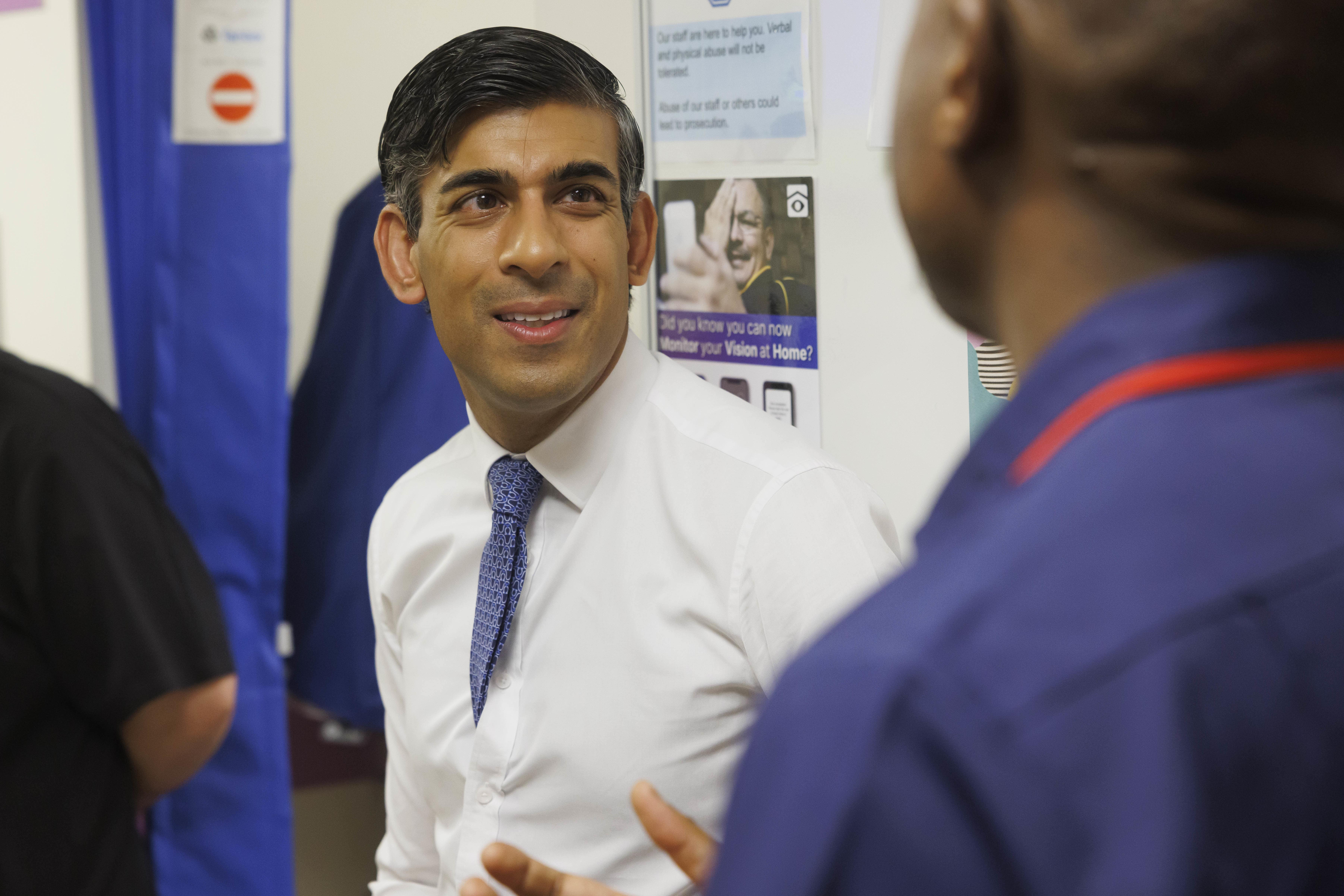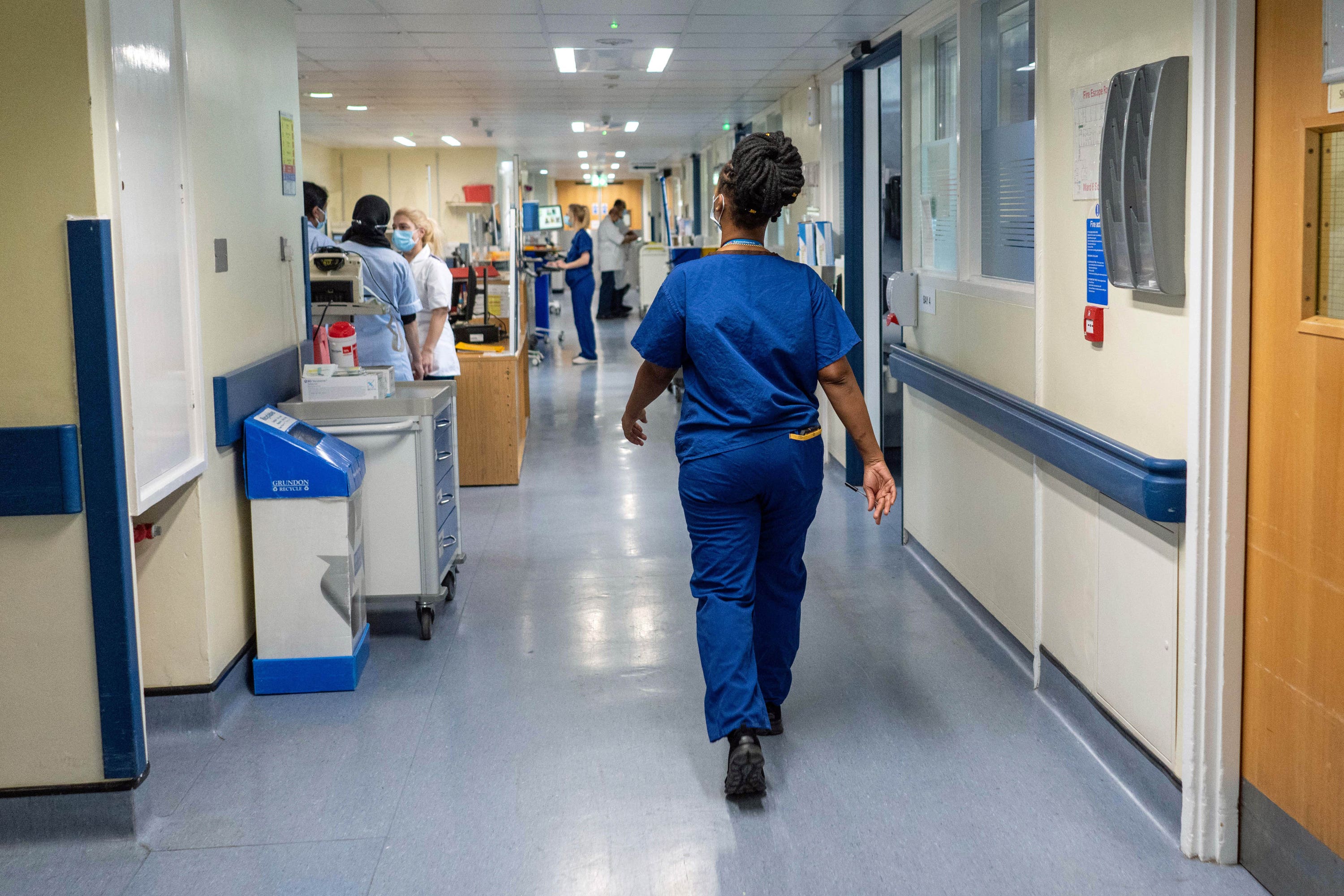NHS waiting list even higher than before Rishi Sunak pledge
The PM ‘increasingly unlikely’ to hit target to reduce the waiting list – as pledged a year ago – with just months left until the April deadline
Your support helps us to tell the story
From reproductive rights to climate change to Big Tech, The Independent is on the ground when the story is developing. Whether it's investigating the financials of Elon Musk's pro-Trump PAC or producing our latest documentary, 'The A Word', which shines a light on the American women fighting for reproductive rights, we know how important it is to parse out the facts from the messaging.
At such a critical moment in US history, we need reporters on the ground. Your donation allows us to keep sending journalists to speak to both sides of the story.
The Independent is trusted by Americans across the entire political spectrum. And unlike many other quality news outlets, we choose not to lock Americans out of our reporting and analysis with paywalls. We believe quality journalism should be available to everyone, paid for by those who can afford it.
Your support makes all the difference.The NHS is failing to hit most of its key targets, with the waiting list now even higher than when Rishi Sunak promised it would fall, new figures show.
Fresh data from NHS England shows that the waiting list for routine hospital treatment in England has fallen for the second month in a row, from 7.71 million in October to an estimated 7.61 million in November.
The prime minister set a pledge in January last year to cut NHS waiting lists, promising that “lists will fall and people will get the care they need more quickly”. It was one of five priorities he set out, alongside growing the economy, stopping small boat crossings across the Channel, cutting the government’s debt, and halving inflation – the last of these being the only one that has been met.
But analysis shows that the waiting list stood at 7.21 million when he made the pledge at the start of 2023. There would need to be a 400,000 drop in the December 2023 data – which has not yet been published – to return the waiting list even to the level it was at when the pledge was made.
The statistics – which relate to the period before the latest round of junior doctor strikes – also show that a number of other key NHS targets are being missed, including for cancer, ambulance handovers, and the number of patients waiting longer than 18 months for treatment.

Sarah Woolnough, chief executive of think tank The King’s Fund, said: “Pressures are widespread across the health and care system, including ongoing industrial action over NHS staff pay and working conditions impacting the speed of elective recovery.
“With the waiting list for routine care at 7.6 million, it is increasingly unlikely that the prime minister’s pledge to improve waiting list performance by this March will be met.”
Sir Julian Hartley, chief executive at NHS Providers, said NHS trusts are starting the new year “grappling with significant winter pressures across urgent and emergency care”.
He said: “Although progress on key recovery targets across urgent and emergency care has slipped, NHS leaders still aim to meet these by the end of March.”
The figures show that 11,168 people in England were waiting more than 18 months to start routine hospital treatment at the end of November, up from 10,506 at the end of October.
The government and NHS England set the ambition of eliminating all waits of more than 18 months by April 2023, excluding exceptionally complex cases or patients who chose to wait longer.

Meanwhile, at least 151,295 people were waiting more than 12 hours after arriving at A&E last month – up from 147,030 in November – as winter pressures such as Covid, flu and a series of strikes hit the service.
A total of 69.4 per cent of A&E patients were seen within four hours, down from 69.7 per cent the previous month and against a target set for March this year of 76 per cent.
Pressure on ambulance services also crept up, although the situation was not as bad as in December 2022. The average response time in December 2023 for ambulances dealing with the most urgent incidents, defined as calls from people with life-threatening illnesses or injuries, was eight minutes 44 seconds.
This is up from eight minutes 32 seconds in November and is above the target standard response time of seven minutes.
Ambulances took an average of 45 minutes 57 seconds last month to respond to emergency calls such as heart attacks, strokes and sepsis. This is up from 38 minutes 30 seconds in November, while the target is 18 minutes.
The NHS saw improvements in performance on some cancer waiting times in November. Some 71.9 per cent of patients urgently referred for suspected cancer in November 2023 were diagnosed or had cancer ruled out within 28 days. This was up from 71.1 per cent the previous month but below the target of 75 per cent.
In addition, the proportion of patients in England waiting longer than 62 days in November from an urgent suspected cancer referral or consultant upgrade to their first definitive treatment for cancer was 65.2 per cent. This was up from 63.1 per cent in October but well below the 85 per cent target.
But a total of 269,631 urgent cancer referrals were made by GPs in England in November, up slightly from 269,492 in October, and also up year-on-year from 264,785 in November 2022.
NHS England said progress in cutting the overall waiting list was due to staff delivering more than 1.63 million treatments in November, the highest monthly activity on record. The number waiting over a year for treatment also fell to 355,412 in November, the lowest it has been since May 2022, it said.
Professor Sir Stephen Powis, NHS national medical director, said: “The sheer volume of care delivered by NHS staff for patients across the country is hugely impressive, with more people than ever before treated in November and the waiting list falling for the second month in a row.
“We have experienced the toughest possible start to 2024 with the longest set of strikes in our 75-year history, but we remain focused on doing all we can to make progress on the Covid backlog that has inevitably built up over the pandemic.”
Health secretary Victoria Atkins said: “November was the first month without industrial action for over a year and we reduced the total waiting list by more than 95,000 – the biggest decrease since December 2010, outside of the pandemic.
“This shows the progress our fantastic NHS staff can make towards bringing waiting lists down when they don’t have to contend with industrial action.”
Subscribe to Independent Premium to bookmark this article
Want to bookmark your favourite articles and stories to read or reference later? Start your Independent Premium subscription today.

Join our commenting forum
Join thought-provoking conversations, follow other Independent readers and see their replies
Comments